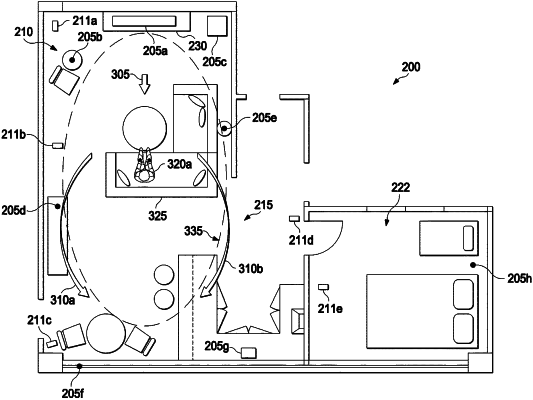| CPC H04S 7/302 (2013.01) [H04R 5/02 (2013.01)] | 29 Claims |

|
1. An audio processing system, comprising:
an interface system; and
a control system configured for:
receiving audio data via the interface system, the audio data including one or more audio signals and associated spatial data, the spatial data indicating an intended perceived spatial position corresponding to an audio signal, the spatial data including at least one of channel data or spatial metadata;
receiving, via the interface system, a rendering mode indication, wherein receiving the rendering mode indication involves receiving an indication of a number of people in a listening area;
determining a rendering mode based, at least in part, on the number of people in the listening area;
rendering the audio data for reproduction via a set of loudspeakers of an environment according to the rendering mode, to produce rendered audio signals, wherein:
rendering the audio data comprises determining relative activation of the set of loudspeakers in an environment;
the rendering mode is variable between a reference spatial mode and one or more distributed spatial modes;
the reference spatial mode has an assumed listening position and orientation; and
in the one or more distributed spatial modes, one or more elements of the audio data is or are each rendered in a more spatially distributed manner than in the reference spatial mode and spatial locations of remaining elements of the audio data are warped such that they span a rendering space of the environment more completely than in the reference spatial mode; and
providing, via the interface system, the rendered audio signals to at least some loudspeakers of the set of loudspeakers of the environment.
|